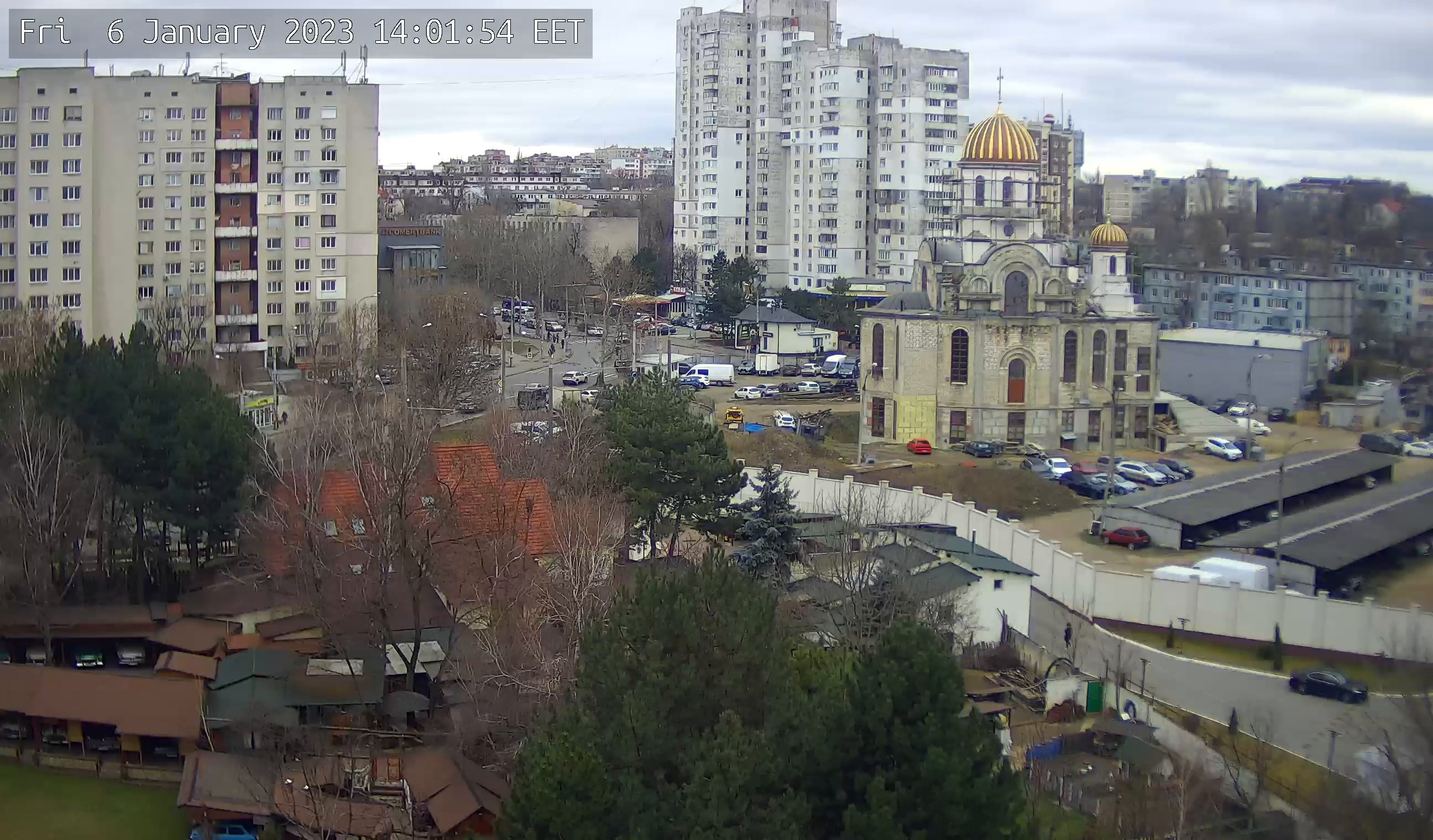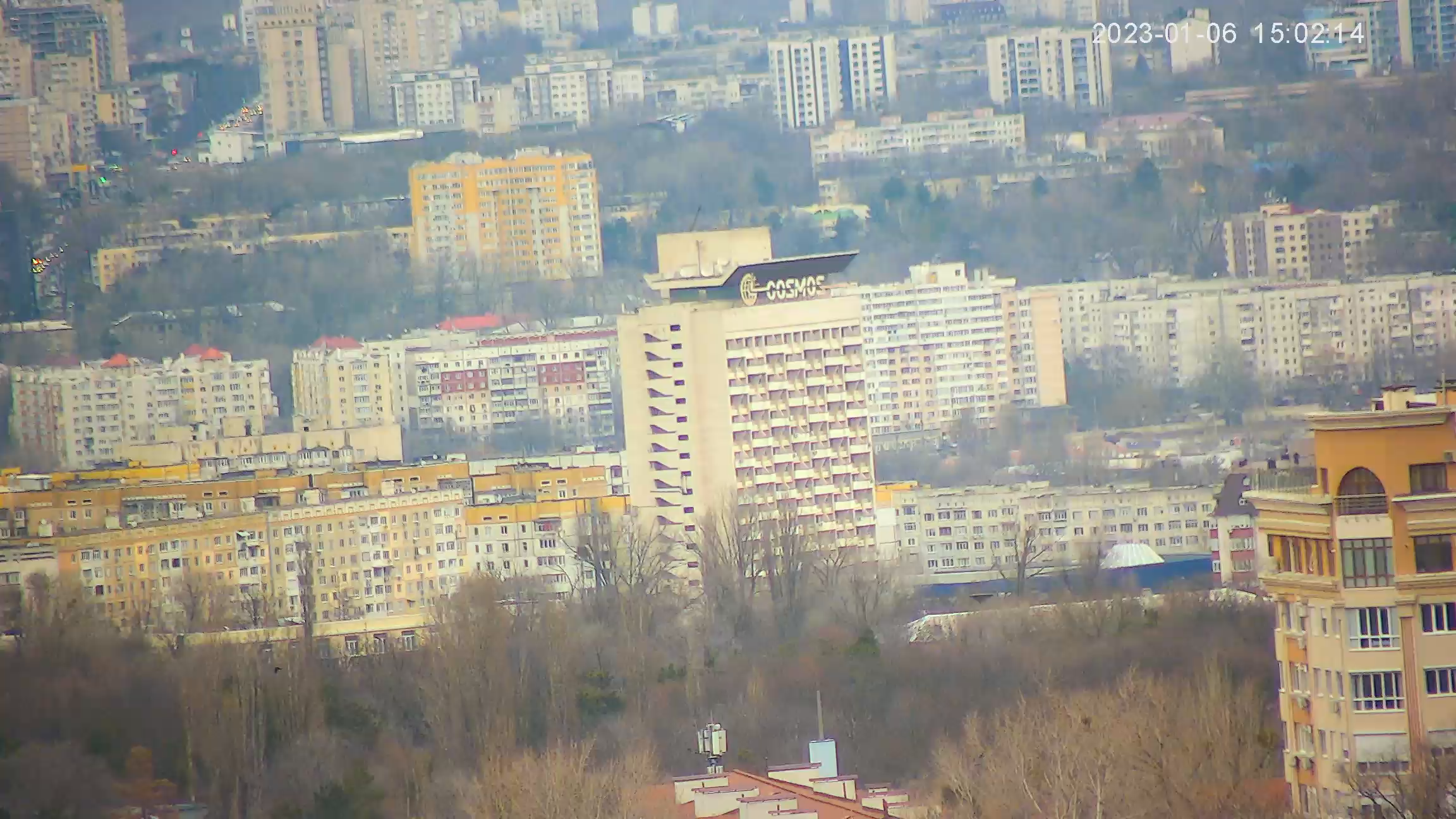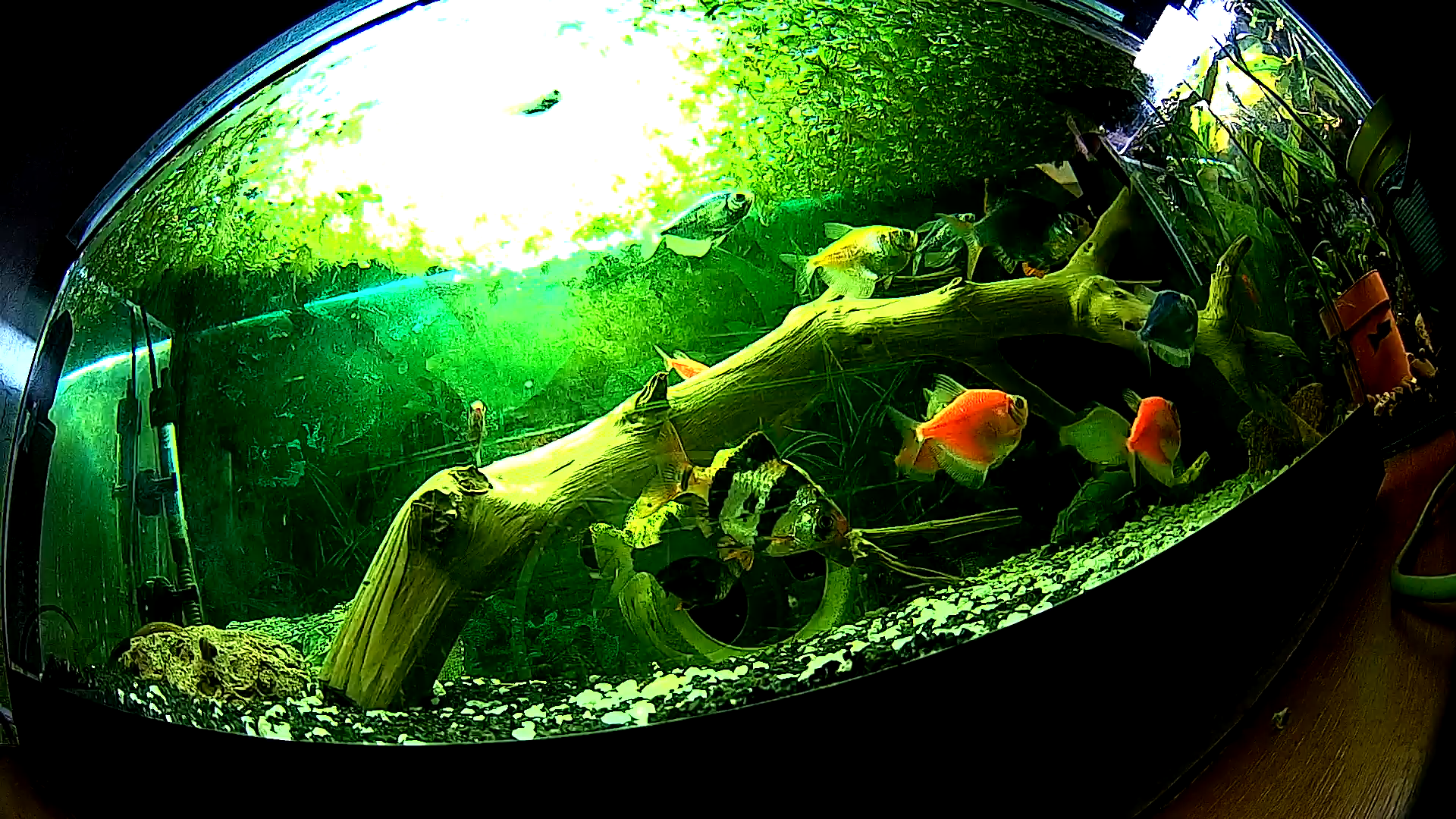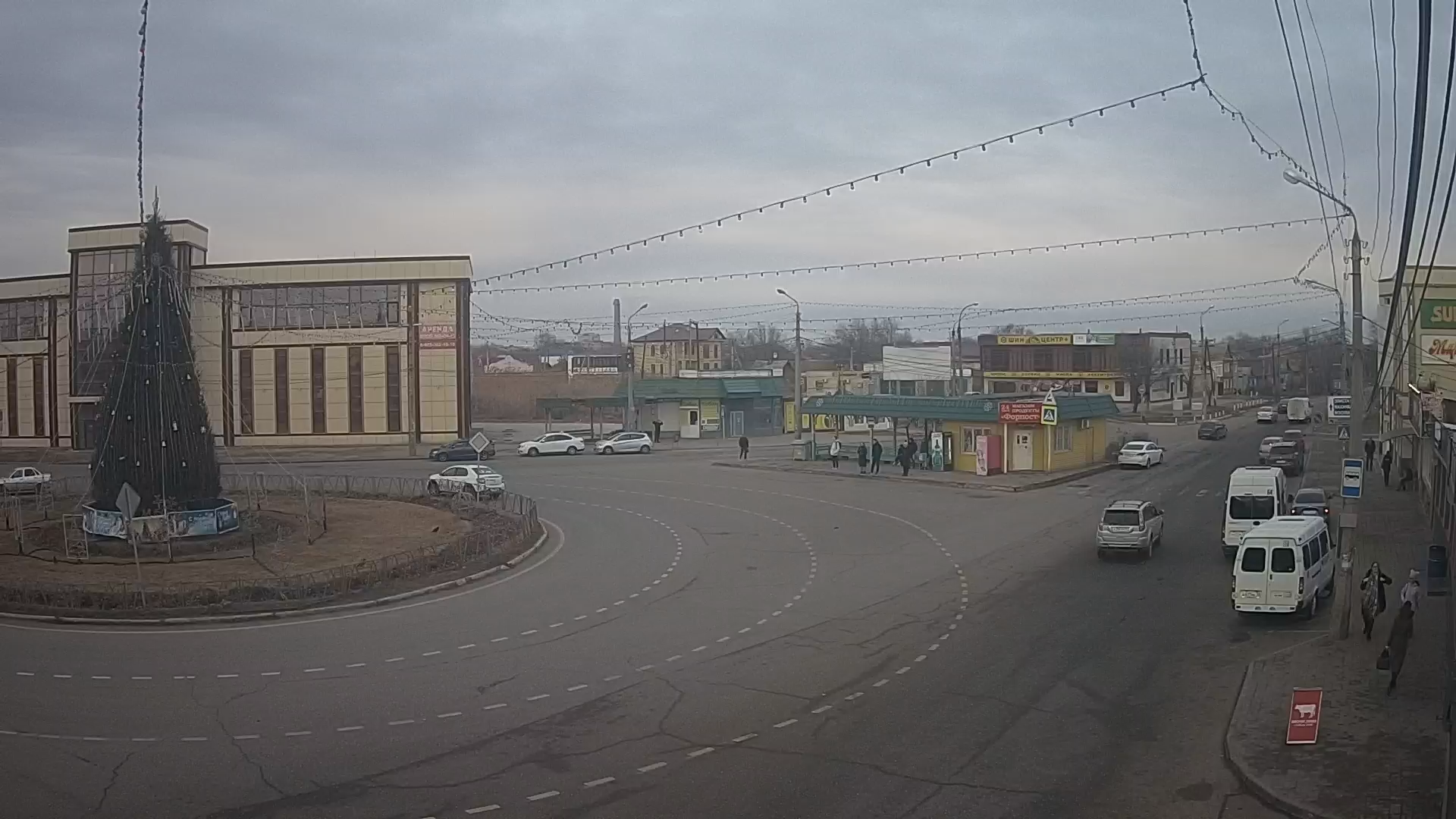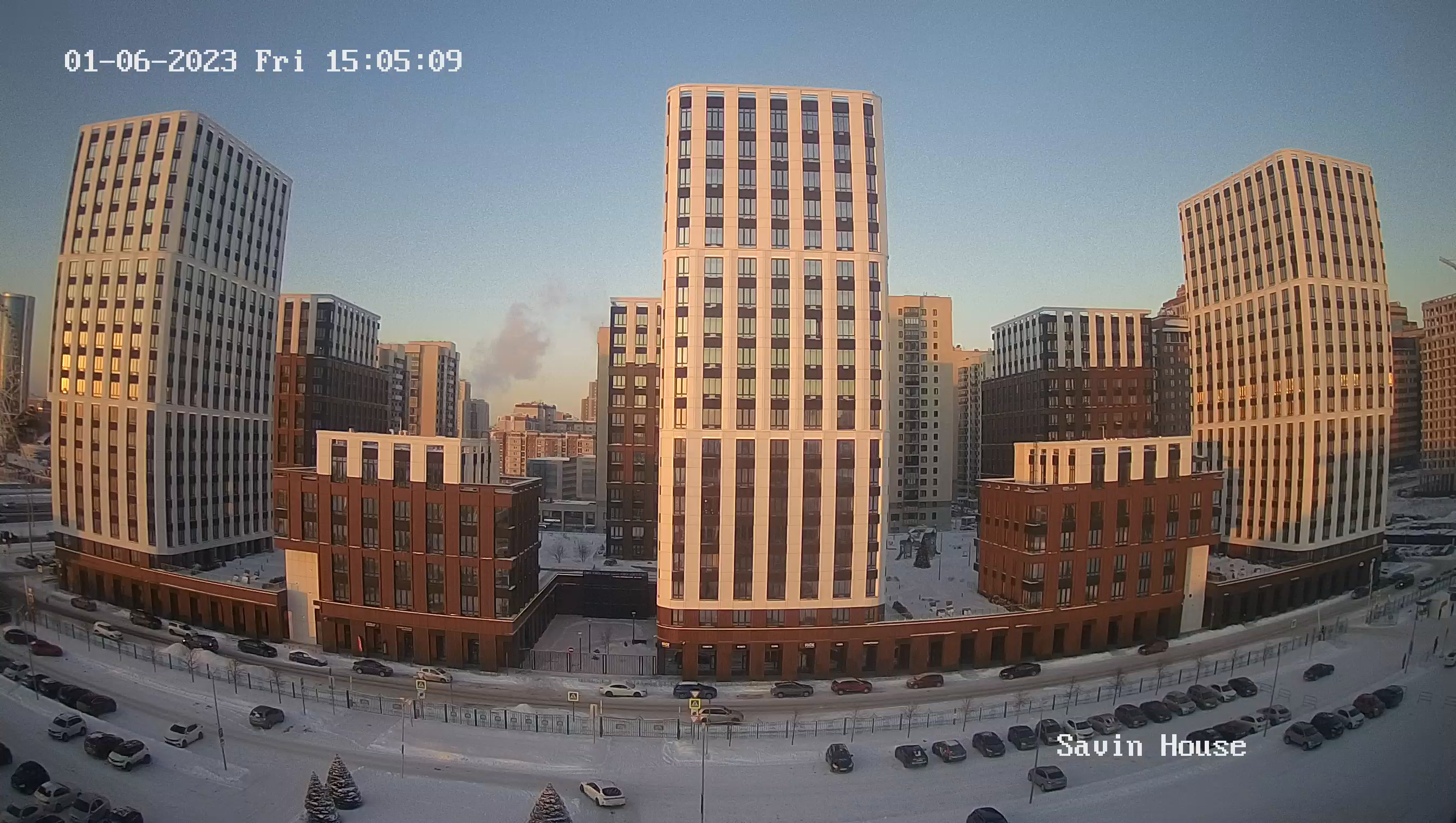Online Camera Krasnoyarsk. Red Square, Robespiera Street, Karl Marx Street
Krasnoyarsk's Red Square used to be called Platz-Paradnaya. Here were held military exercises of the cantoned troops. From the 20s of the XIX century in the quarter of modern streets Robespiera, Karl Marx, Dekabristov and Bograda there were wooden barracks of the Krasnoyarsk Reserve Battalion. Military families were allowed to settle around Platz-Parade square. Thus was formed Soldier's Sloboda (it was demolished during the construction of a radio factory in the mid-1940s). In 1873 in the center of soldier's quarters Alexander Nevsky church was built, which burned down in 1923. Now at this place is a residential building number 132, relating to Karl Marx Street.
On the southern side of the square during the development of Soldiers' Sloboda were built buildings of the military hospital and two stone buildings of gendarme command.
At the beginning of XX century there appeared a number of stone private houses and a bathhouse building. Some of these buildings survived to this day.
At the same time a half-stone building of the city steam well was erected on the place of the monument which is now standing on the Red Square, and next to it - the homestead of the fire department of the Voluntary Fire-fighting Society (the buildings did not survive).
January 7, 1920 on the square in a mass grave were buried 75 men who died in the clash with the army of Kolchak in Krasnoyarsk. The common grave occupied a narrow strip on the eastern edge of the square; at its northern edge was placed a stone obelisk. Platz-Parade square became known as Red Square.
After 1920, the square was used for public events and for the classes of "Vsevobuch". In 1945-1948, Japanese prisoners of war lived on Red Square in temporary buildings.
In 1949-1950, the Leningrad architects developed the lay-out plans for the city's gardens and parks, including Red Square. In those years the circus "Shapito" worked on the square.
In 1953 along the axis of the straightened Karl Marx street a pyramid stone monument (the author A.A.Kozlov) was placed near the common grave. In 1967 an honorary Pioneer post number 1 was established near it, and a year later the eternal flame was lit there. On the plate the monument was inscribed: "In memory of the fighters, heroically fallen for the liberation of the city of Krasnoyarsk from the kolchak gangs in December 1919 - January 1920.
In 1977, according to the new layout of the square the monument was dismantled and a 27-meter stele "bayonet plunged into the ground" was installed on its western part - a symbol of the end of the war (draft A.S. Demirkhanov). And the common grave was rolled in asphalt paths and planted with flowerbeds.
In 2009 the stele was repaired. In 2009 the stele was repaired, the granite facing slabs were removed for security purposes, the bayonet was painted as syenite, and now the stele is called "Monument to the Revolutionaries.
On the south side of the square are high-rise apartment buildings: two brick "Khrushchev" and two nine-story brick houses with large apartments, the numbering of which refers to Red Square.
Three stone buildings of pre-revolutionary buildings have survived to our days: the commercial baths of Maistrovich and Fleiner, 1911-1913 (Red Square, 7); the lodging house of the late XIX century (Red Square, 17); the manor house of Fleisher, 1912 built (Kazarmenny Lane, 8).

